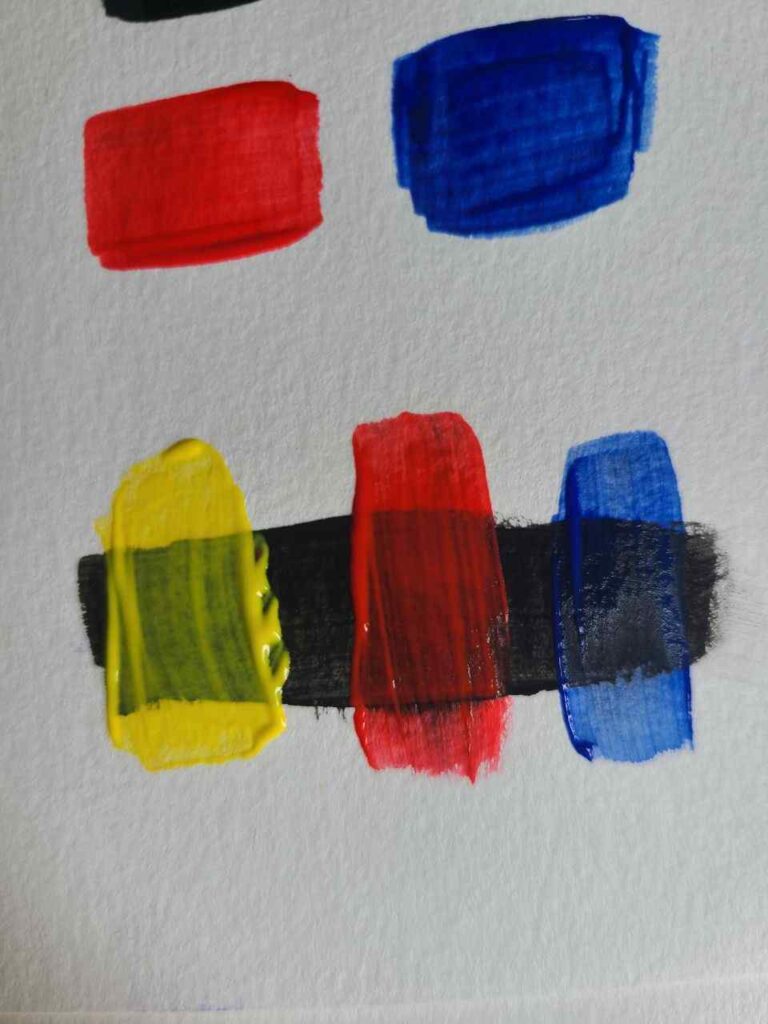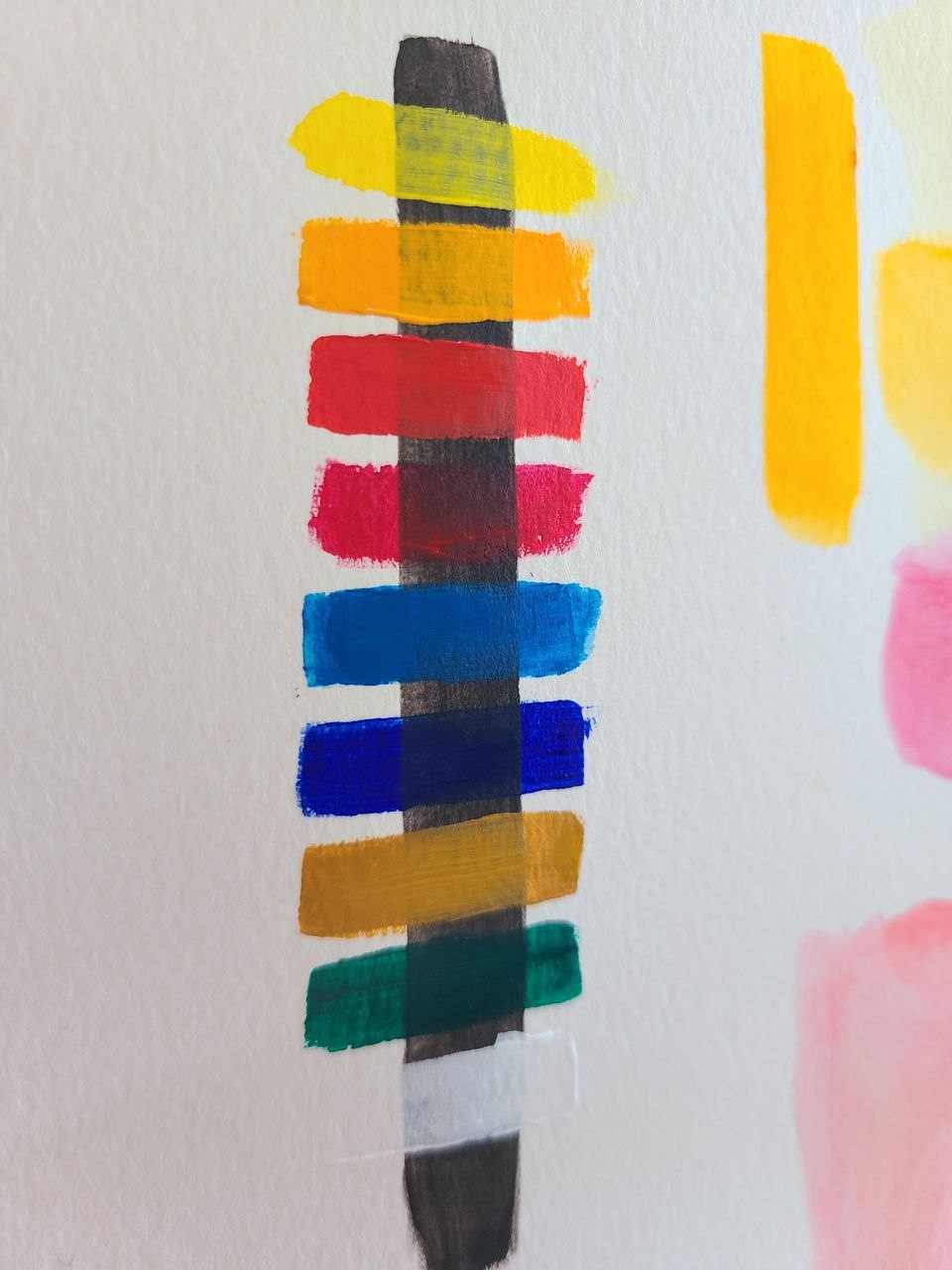Last Updated on March 22, 2024 by Masha Eretnova
Getting some supplies for your next art project does not have to be a complicated venture. If you are choosing better tempera and acrylic you want to consider a few differences they have and the limitations tempera offers.
I have been painting and testing art supplies for the last 4 years and in my inventory I have different acrylic paint brands. This time I got a tempera paint set to compare its performance with acrylic.
As I got washable tempera, not egg tempera (I’ll explain the difference), the tempera results were quite mediocre. Let me explain in detail.
Acrylic paint is more permanent, opaque, and vibrant than tempera. Tempera paints are great for school projects and a cheaper alternative for kids, while acrylic paint is a medium for artists of all levels.
At the end of the day, they are simply two different paints used for different purposes.

Table of Contents
This article contains affiliate links. It means no extra cost for you but a little commission (2-3%) for me to support my hobby and blog. Thank you!
Tempera Paint: Key Advantages and Drawbacks
Tempera paint is a water-based paint that contains calcium carbonate, cellulose, starch, water, and, of course, the pigments that give it its stunning and vivid colors.
Tempera comes in 2 grades:
- professional egg tempera and
- kids’ washable tempera.
Egg Tempera Paint

The egg serves as a binder in this sort of tempera, which is made up of artist-grade pigments and eggs. You could also find gum Arabic, vegetables, eggs, dairy, peanuts, and more in old-school tempera.
Since the 1600s, this kind of paint has been employed as the standard painting medium, and samples of it may still be found in galleries today.
Marc Chagall used egg tempera for his masterpieces! The Birth of Venus by Sandro Botticelli is also painted with tempera!
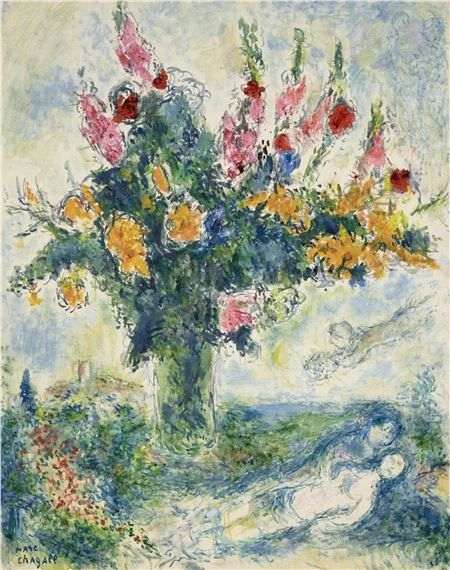
Now, you can only find Sennelier Egg Tempera but dozens of cheap washable “tempera” paints. Times change, it’s no longer Renaissance!
As they are hard to come by these days, many artists resort to making their own egg tempera paint because all you need are eggs, coloring (or powdered pigment), some water (The general rule is to mix 1:1 powdered tempera and water) and a tool to mix them, like a fork or whisk.
Washable tempera paints for kids
Tempera paints today are frequently seen in classrooms because they are versatile and work well for most craft projects.
Such tempera has calcium carbonate, starch, cornstarch, cellulose, gum-water, or glue=based binder and that is what makes it so close to poster paint.
Tempera paint is great for finger painting and quick kids’ paintings on paper, cardboard, and canvas panels.
You may typically find tempera paint in the following forms:

- Liquid
- Powder to mix with water
- Cake
- Stick
Tempera paint is produced utilizing a water-based composition and is made to make painting fuss-free for you.

Advantages of tempera paint over acrylic:
- Safe to be used on the skin and for finger painting, safe for kids of any age
- Quick drying
- Washable and easy to tidy up
- Mixes well enough
- Cheap
- Often smells nice (if the brand added fragrance).
The drawbacks of tempera paint compared to acrylics are:
- Can rarely achieve the intense color saturation acrylics provide
- Since tempera is cheap paint, its production practice of using fillers results in a high degree of chalky texture.
- It can turn crumbly if the water content used in the paint mixture is incorrect.
- Non-permanent paint
- Cannot be applied in thick layers, and doesn’t create texture.
- Tempera paint can’t be used on fabric – it will be just washed off
What Is Acrylic Paint?
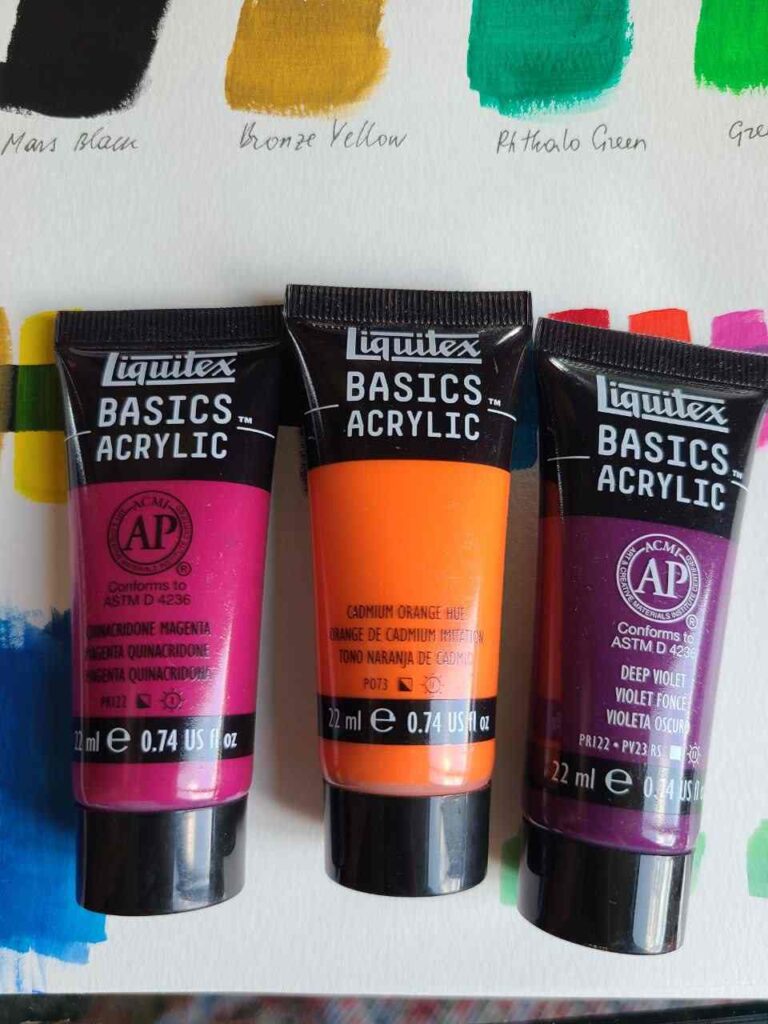
Acrylic paint is a type of water-based paint that uses synthetic polymer compounds and binders. Since the pigments are gritty solids, the coloring doesn’t disintegrate.
Rather, it is kept in place by the binder and suspended in the polymers.
The polymers allow acrylic paint to be built up.
It holds a shape reasonably well, which makes it ideal for anything that is intended to add a lot of texture. Acrylic paint loses water during the drying process. Ultimately, only the colors are visible.
Acrylic paint is generally considered to be thick, glossy, water-resistant, and highly durable.
Some of the advantages of acrylic paint compared to tempera are:
- It is a versatile paint – acrylics can be used to produce any desired effect you’d like because you can easily thicken them up or water them down to the desired consistency
- Brushes and paint can be washed with mere water – remember to do it quickly!
- Layering the paint is a breeze because of how quickly it dries up
- Acrylic paint is permanent
- It works on almost any surface
- It is more opaque and vibrant
- Acrylics are perfect for mixing new colors and blending.
- Can be used with a variety of techniques, including pouring.
- It is thicker and heavier than tempera
- It has a smooth semi-gloss shiny finish once it dries
- It is completely water-resistant and can be waterproofed with a sealer.
The drawbacks of acrylics are:
- There is a learning curve as it is a professional art medium: blending and some techniques can be challenging
- When it comes to acrylic mediums, some acrylics may have additional chemicals and harmful pigments. Acrylics are non-toxic in general but are not completely safe for kids’ painting.
- The color of an acrylic gets darker as it dies, so you may not get the hue you want
- You cannot change the paint after it has dried and they do dry too fast.
- They cannot be washed off once dry.
- Not completely safe for our planet.
Comparing Acrylic & Tempera in Tests
The main difference between tempera and acrylic is that tempera is a thinner washable paint that dries to a matte finish, while acrylic is a permanent paint, made with polymers, that dries to a glossy finish and is more durable and water-resistant.
At most, tempera paint is semi-permanent because it is washable and reactivated with water. While acrylic paint is recognized for its permanent properties and fast drying time.
| Property | Tempera Paint | Acrylic Paint |
|---|---|---|
| Paint Composition | Typically water-based. Binder is food-based: eggs, or allergy-free like cornstarch. | Typically water-based. The binder is food-based: eggs, or allergy-free like cornstarch. |
| Consistency | Creamy, thinner than acrylic paint | 3 main consistencies: – Heavy-body (thick), – soft body, – and fluid. |
| Dry Time | Anywhere between 5 – 10 minutes | 10 – 30 minutes to touch dry.12 – 24 hrs to be fully cured |
| Opacity | more transparent | Different opacities available (translucent, medium, and opaque) |
| Color mixing | Great | Excellent |
| Preparation | No prep is necessary | Gesso is needed to prep the canvas before painting |
| Price | cheap (USD 0.1 per fluid oz) | Entry-level acrylic paints are affordable (USD 1.2 per fluid oz) but high-end, professional acrylics can be quite pricey. |
| Shelf life | 2 to 5 years max | up to 15 years |
| Best Used On | paper, cardboard, or paper mache. | canvas, paper, wood, fabric, metal, glass, ceramics, etc. |
| Mixing And Blending | Color mixes ok and blends well | Color mixes and blends are excellent. |
| Layering | Painting in layers is challenging because adding water might revive the initially dried first layer. Streaky application | Layering can be done easily as the paint does not budge once dried. |
| Color Lifting | Colors can lift. | Upon drying, colors are permanent. |
| Finish | Matte finish | Glossy finish |
| Durability | Non-permanent, washable. Not resistant | The solid bond in the paint can withstand some scrubbing and wear and tear. Maintains its color over time. |
| Toxicity And Safety | The majority of well-known brands of tempera paint have the AP (Approved Product) Certification Seal, which attests to the materials’ safety, and non-toxicity and guarantees that users, especially kids. | Although standard acrylic paint is thought to be non-toxic, certain pigments, such as cadmium or cobalt, can be dangerous. Keep acrylic paint away from your skin. |
| Water Resistance | Washable Tempera is not water-resistant or waterproof. Egg tempera is water-resistant. | It is water-resistant but not waterproof to some extent. As a result, you must seal the paint to make it more water-resistant. |
| Medium | Tempera is often used as what it is without the involvement of any medium. | Acrylic paints are extremely versatile as they have multiple mediums such as gel, fluid, matte, and the list goes on! |
| Clean up | Tempera is washable and super easy to clean off just is water and soap | Easy while acrylic is still wet, challenging if the paint dried |
| Weather-resistance | Close to none | Pretty durable, better if varnished |
| Mold resistance | Mediocre, can develop mold and grow bacteria | Acrylic is mold-resistant and doesn’t really go bad |
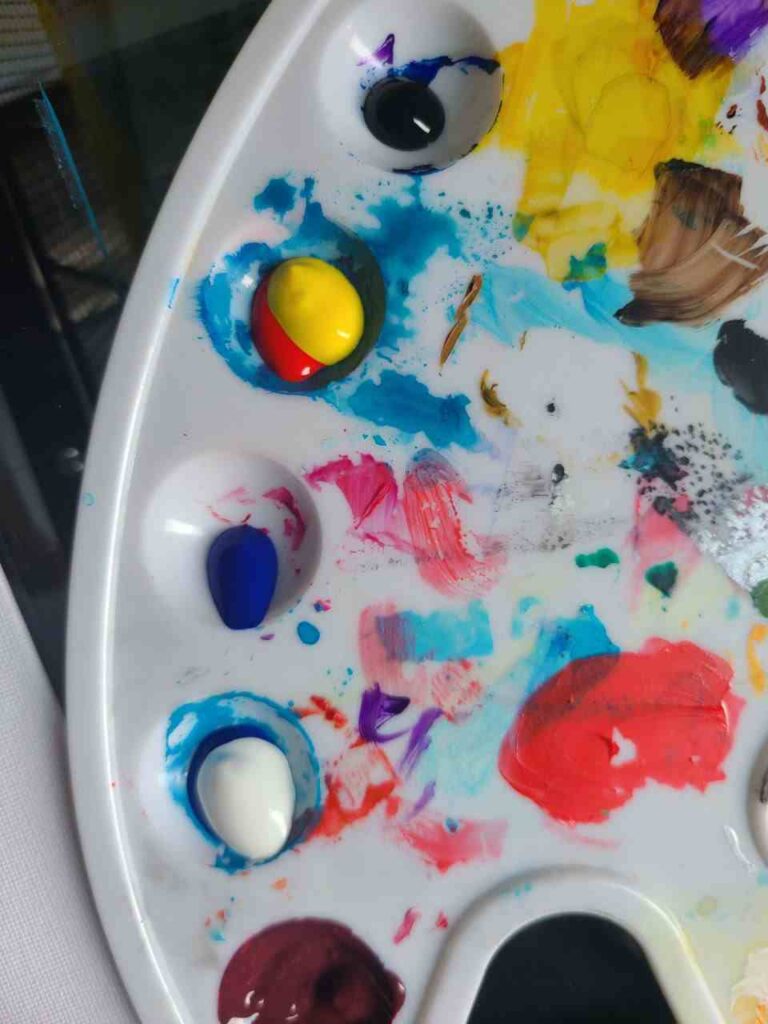
Tempera and acrylic have different paint compositions:
Acrylic paints are water-based paints that have pigments for color, a polymer synthetic binder to ensure it is water resistant, and other agents that provide durability.
Common ingredients in this water-based tempera include eggs (for egg tempera), casein, calcium carbonate, and carbohydrates like maize starch.
Tempera has a limited color range
Tempera has a smaller color range than acrylic paint and to me, tempera colors appear duller and not vibrant.
Acrylics have bright, intense, nice colors.

Consistency
Tempera is much thinner and softer than acrylic paint.
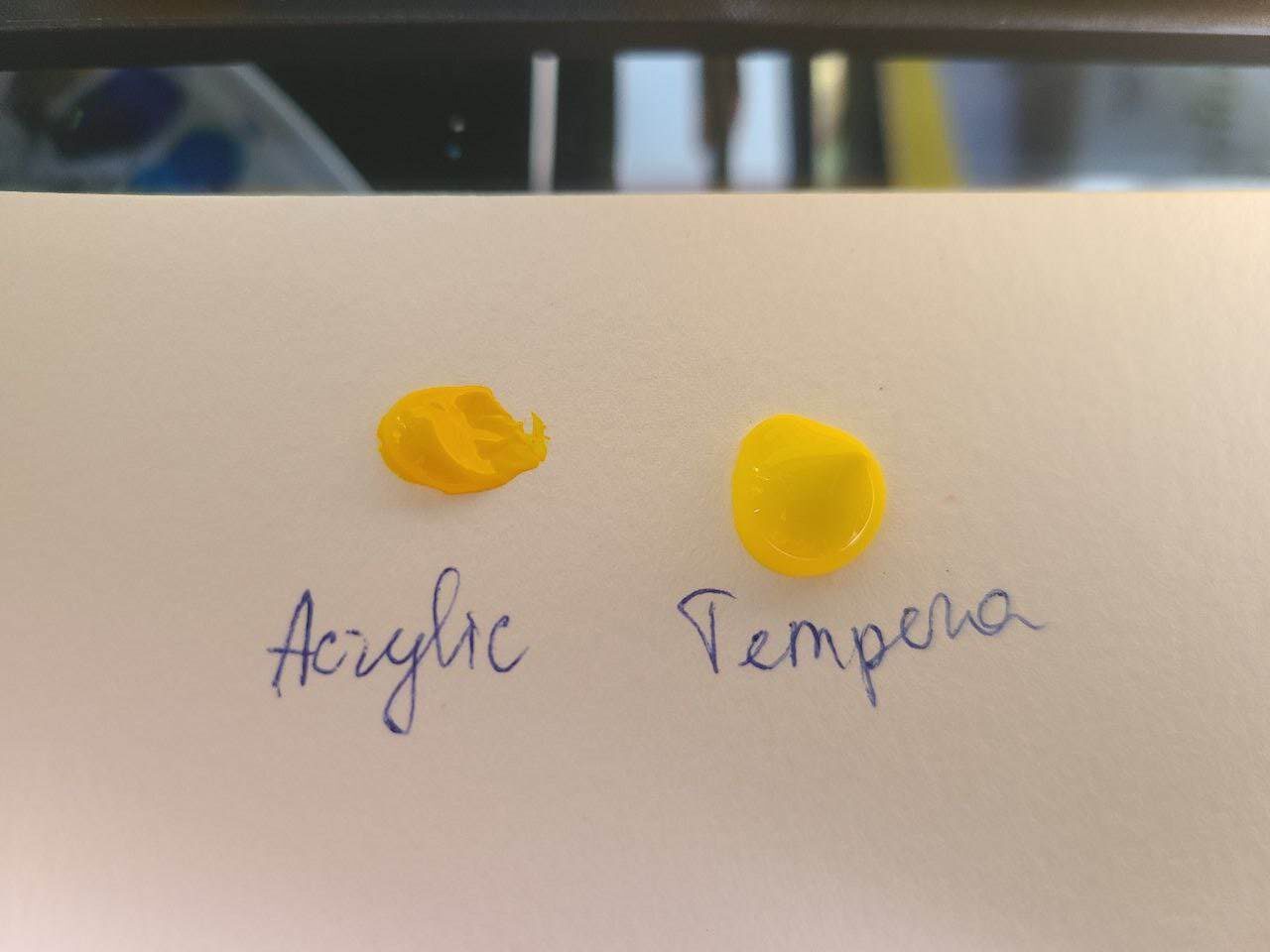
Similar to oil paints in substance, heavy-body acrylics hold brushstrokes and make it easier to blend and combine colors.
Tempera paint is more fluid and thinner than regular acrylic paint.
Tempera is not opaque unlike acrylics
Tempera is a semi-opaque substance. The tempera I tested is pretty much transparent.
If mixed with white paint, Tempera becomes more opaque but it of course changes the value of the color – it becomes lighter.
Acrylic paints have different opacity based on the brands used, but, as a rule of thumb, they are much more opaque than tempera and cover underlying colors very well.
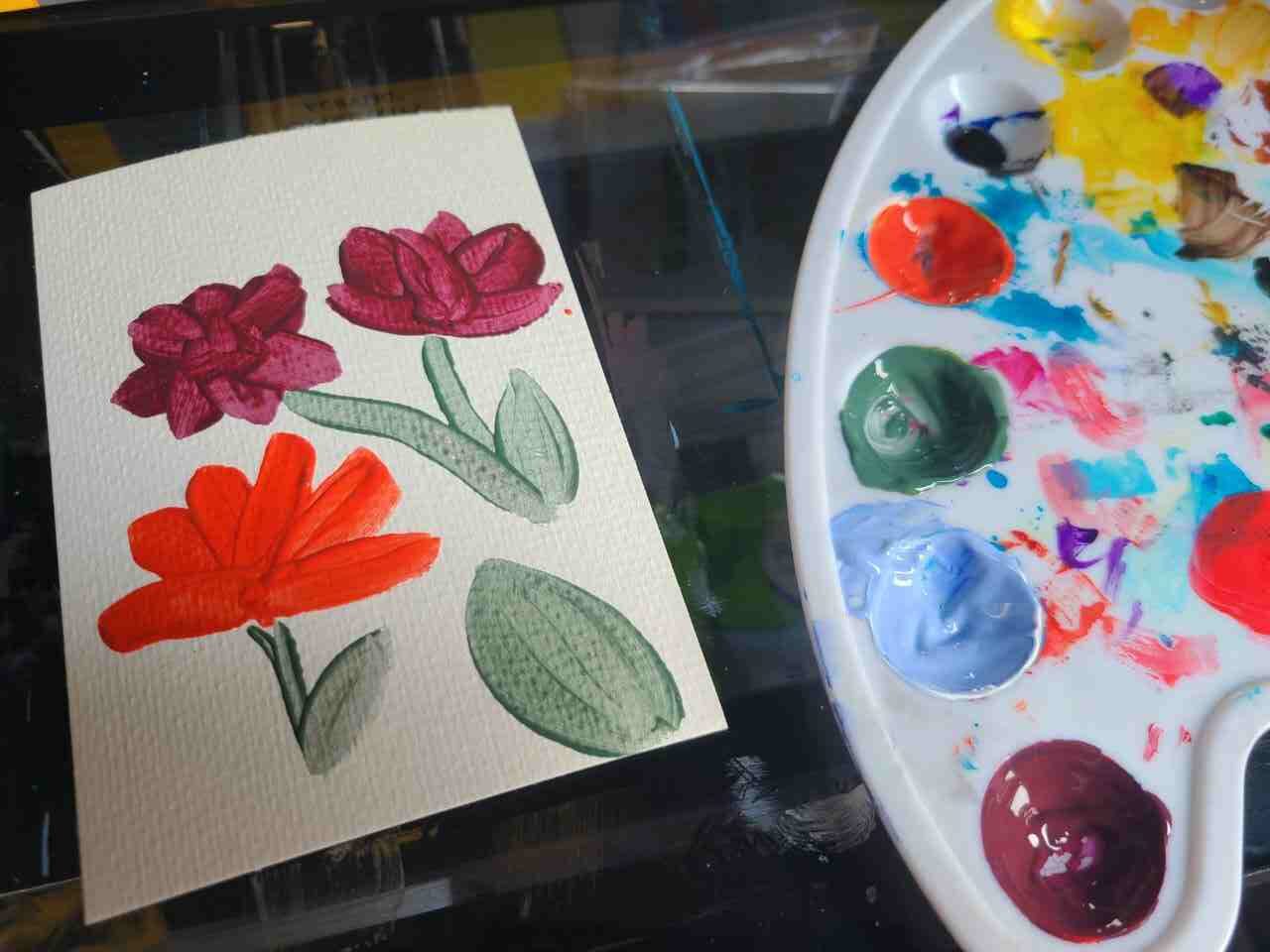
Painting Surfaces
Nearly every single surface, including cloth, paper, wood, porcelain, plastic, canvas, metal, mirrors, glass, and a variety of other materials, can be painted using acrylic paint.
There are many amazing painting surfaces for you to try out acrylic painting.
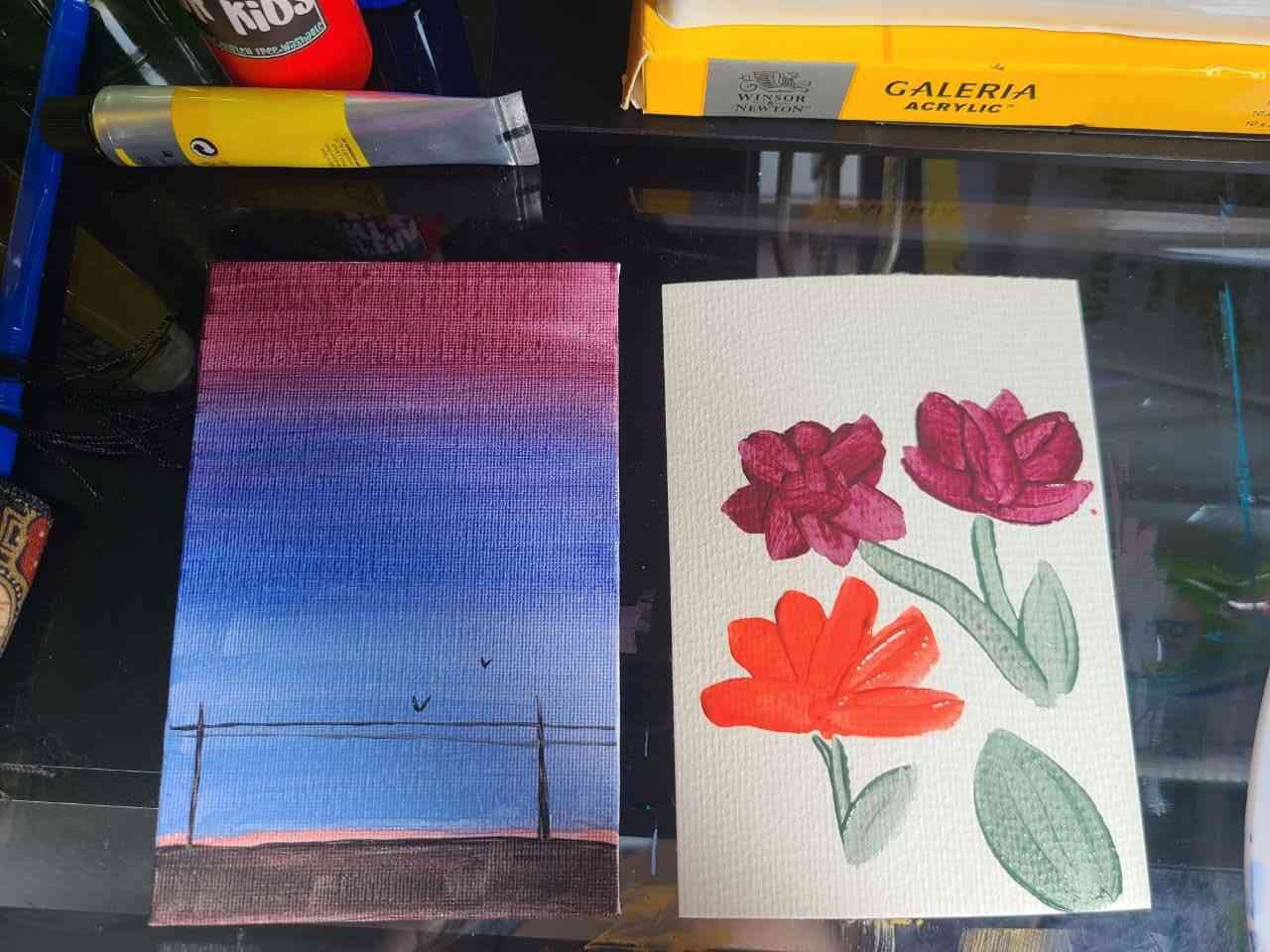
Tempera paints work best on paper, paper mache, cardboard, and poster boards.
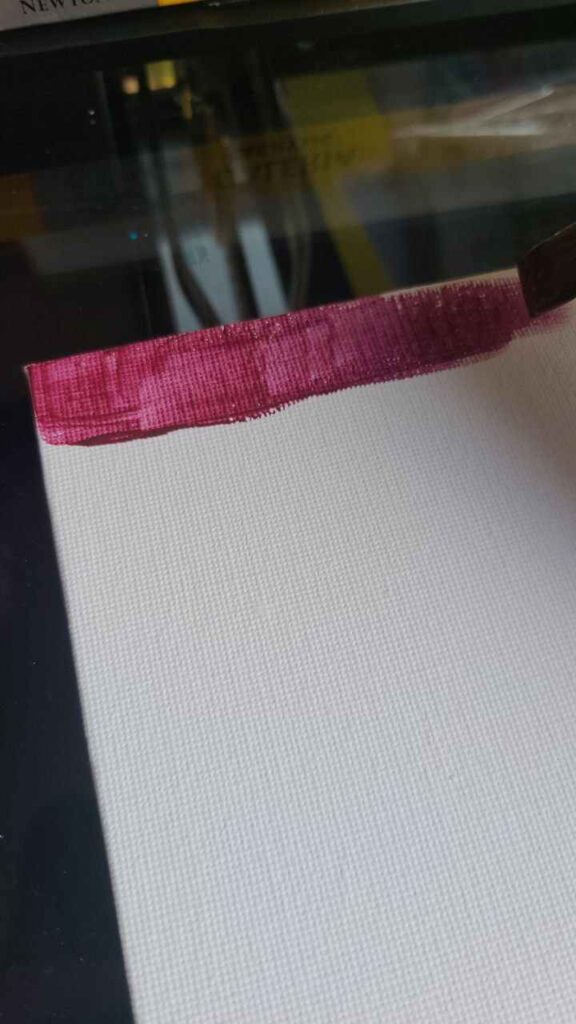
Tempera paint isn’t the best choice if you want to paint on a canvas.
Over time, the tempera paint may fade and break. Tempera also has poor coverage on canvas (see the pic) than acrylic.
Since it is washable, it doesn’t make sense to me to waste a canvas on tempera. Sorry to say that.
With good reason, acrylic paint is one of the most often used paint kinds for canvas paintings. It dries rapidly, needs few supplies, and is simple to work with. Acrylic, which can be applied either with a brush or palette knife, works best on a prepared canvas.
Read also: Gouache Vs Acrylic: Major Difference Between Gouache And Acrylic
Mixing And Blending
Both acrylics and tempera are easy to mix.
Yet, mixed colors with acrylic paint stay vibrant and opaque while colors mixed with tempera appear duller.

Color mixing options with acrylic paints are virtually limitless.
By mixing, you may create any color.
However, because acrylics dry more quickly, you won’t have as much room for blending on the canvas.
I noticed that colors are nice only when you mix white with some tempera color. If you mix two colors to get a new color, it will be quite dull and transparent.
Layering
Layering is better with acrylic paint while tempera doesn’t layer well. Layering with tempera looks more like glazing at best.

Color Lifting
Color lifting is the easiness with which paint can be redissolved in water and removed by dabbing tissue paper over it.
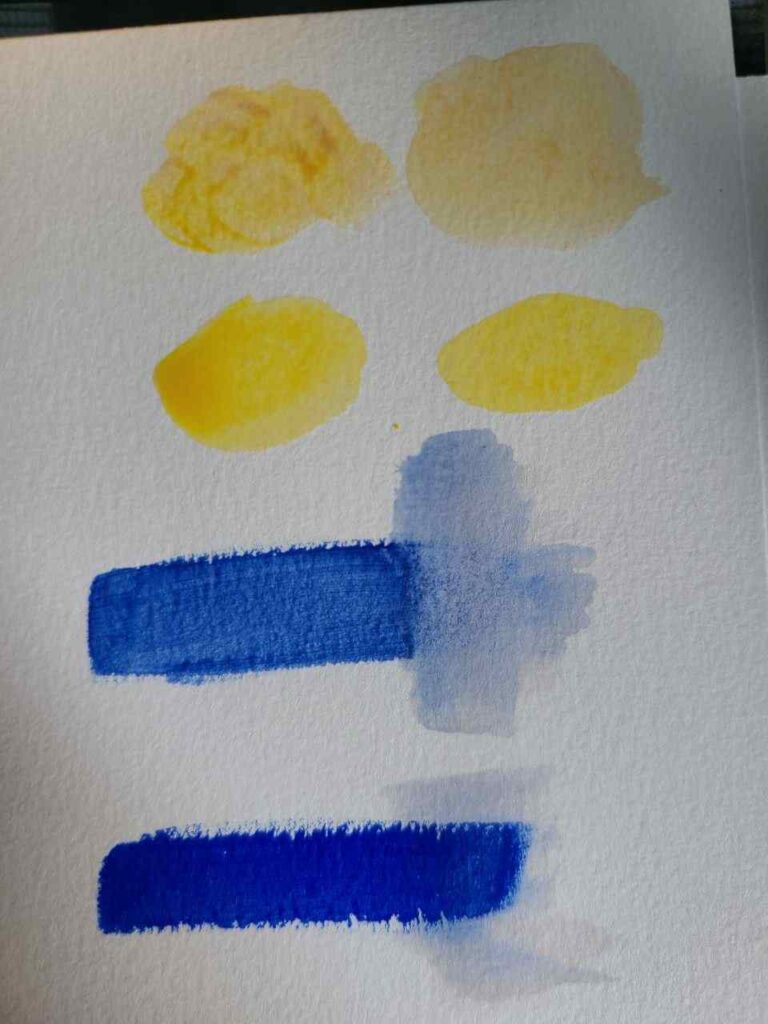
You can lift tempera paint but once acrylic paint has dried, it cannot be lifted or dispersed again.
However, you may simply apply a top paint layer if you want to fix a mistake.
Finish and Lightfastness
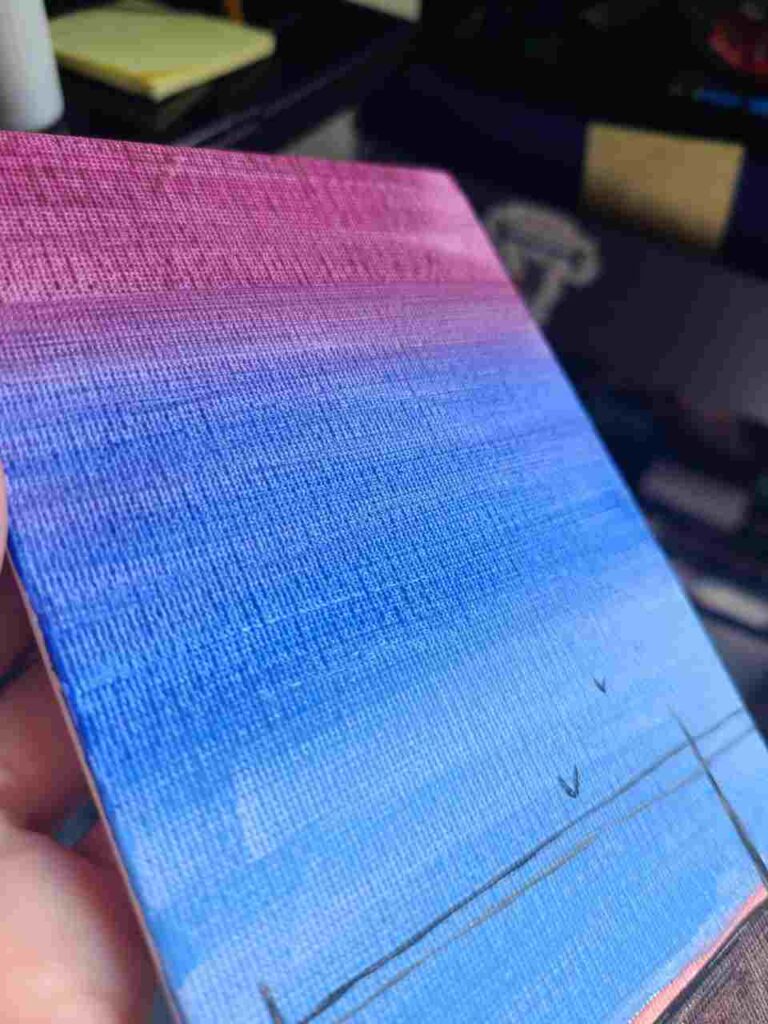
On canvas, tempera paints have a matte, grainy finish, and acrylic paints have a semi-glossy finish.
Tempera paint lacks this type of finish because cellulose and starch in it give it a matte, chalky appearance.
Acrylic paint is lightfast meaning it doesn’t fade over time and stays permanent as it was once dried. But tempera paint is not permanent and can fade if exposed to sunlight.
When acrylic is exposed to sunshine, the colors remain vibrant for longer, especially if you varnish the finished artwork to give a protective coating. With tempera, you are not supposed to use any varnish as it is designed to be a temporary, washable, art medium.
Tempera paint can go bad
Acrylic paint is much more durable and resistant than tempera.
Since the binding agent in acrylic paints is formed of acrylic polymer, the shelf life of acrylic paint is 10 to 15 years, while that of tempera paint is 2 to 5 years.
Tempera paints are often made of organic ingredients, which degrade over time. It will smell unpleasant when tempera paint starts to deteriorate, so you can tell.
Read also: 5 Pro Steps to Protect Acrylic Paintings on Canvas
Tempera is safer than acrylic
The majority of the available tempera paint is non-toxic and safe to use for kids and on skin, unlike acrylics.
But, since tempera is more organic it can contain some allergens in the paint like eggs, dairy, soy, or casein.
If you want to avoid buying tempera with these ingredients, look for an allergen-free alternative like this Colorations Allergen-free Tempera Cakes. Crayola is also trying to reduce allergens in its composition.
You shouldn’t use acrylic paint on any part of your body, including your hands.
Pigments and preservatives in acrylic paint may contain harmful components that can cause allergies or skin irritation. Never put acrylic paint on your hands or those of your children for artistic activities.
More to it, acrylic paint is actually not safe to pour down the drain as it ends up as microplastic in our oceans.
Water-Resistance
Tempera is not water-resistant or waterproof and cannot be used for any outdoor projects or for permanent crafts because you can not waterproof it.
You can reactivate tempera paint with water and there are plenty of washable tempera paints available on the market. Meanwhile, classic egg tempera is water-resistant and made for artists just like acrylic paint.
There are many ways to make acrylic paint waterproof, acrylic paint is generally not washable and it can be difficult to remove.

Keep reading: Poster Paint vs Acrylic Paint: What’s the Difference and Which is best?
Price
When comparing these two types of paint, acrylic is more expensive than tempera.
For example, Liquitex is an amazing brand of acrylic paints and is priced at USD 1.48 per fluid ounce. Likewise, when it comes to tempera, Crayola is a great brand and is priced at USD 0.61 per fluid ounce.
With pricing, the pigments in them play a role. Great-quality pigments are present in high concentrations in professionally used acrylics.
As a result, the prices are greater.
To Sum Up: When to Use Tempera and When is Best to Use Acrylic?
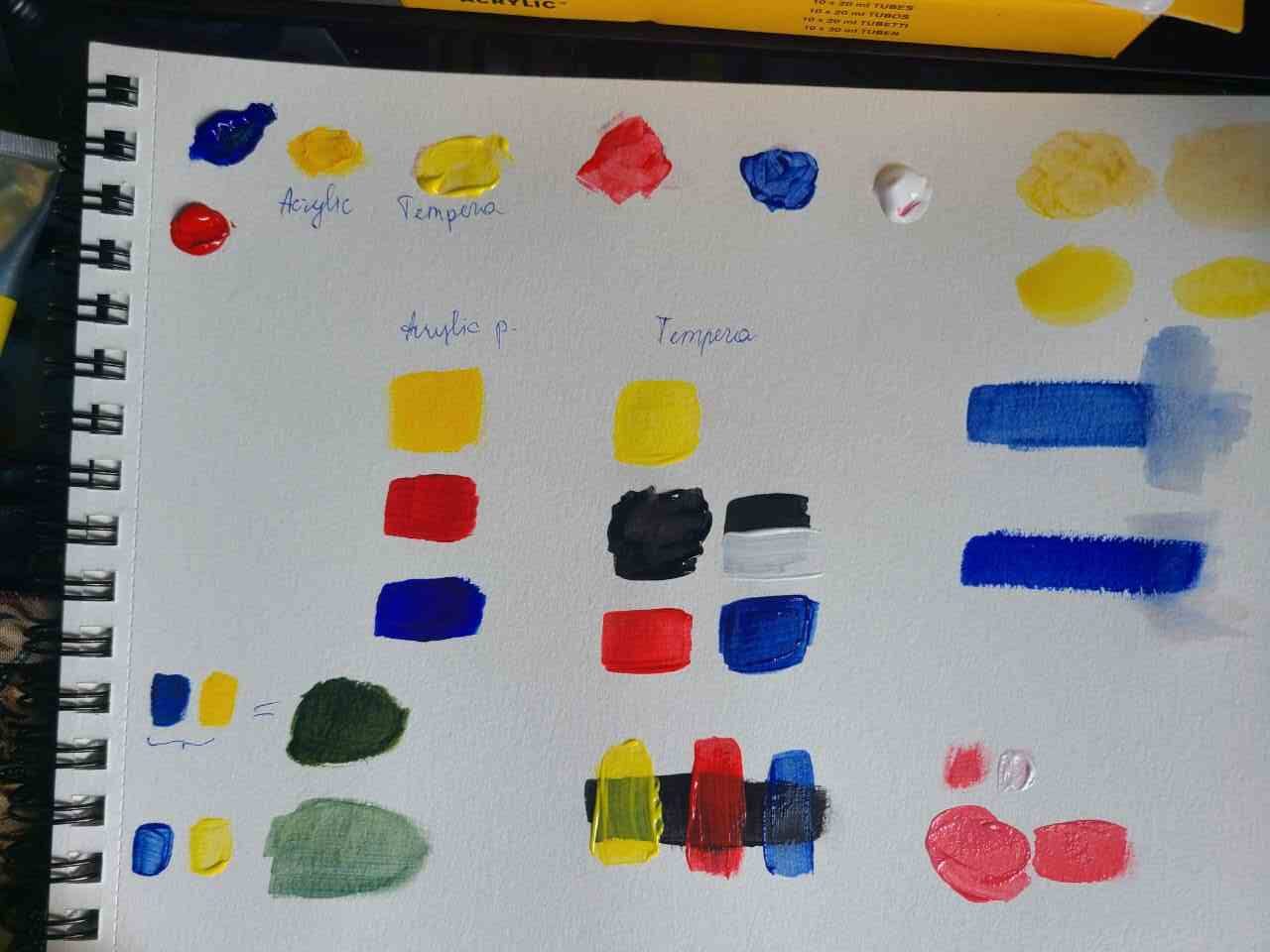
Tempera and acrylic paint are both great mediums, but tempera is better for school projects, while acrylics are a better choice for aspiring artists.
Children and young painters who use paper as support should use craft tempera paints.
If you are an art class teacher and you need paint to use on paper, cardboard, and poster board to produce the greatest results – use tempera.
They are colorful, simple to use, and typically washable.
If you would like to learn how to paint, different techniques, and maybe one day even display or sell your art – choose acrylic paint.
So, which one will it be for you?

Masha Eretnova, born in 1991, is a Buenos Aires-based certified teacher, artist, and member of the Professional Artist Association with 20+ years of personal painting journey.
She started painting and drawing very early and is now an international abstract artist and educator passionate about acrylic painting, gouache, and crafts.
Her works are part of international exhibitions and contests, including ArtlyMix (Brazil), Al-Tiba 9 (Spain), Exhibizone (Canada), Italy, and many more.
Besides her artistic pursuits, Masha holds a post-grad diploma in Teaching Film Photography and 2 music school diplomas: piano and opera singing.
Last update on 2024-07-27 / Affiliate links / Images from Amazon Product Advertising API

